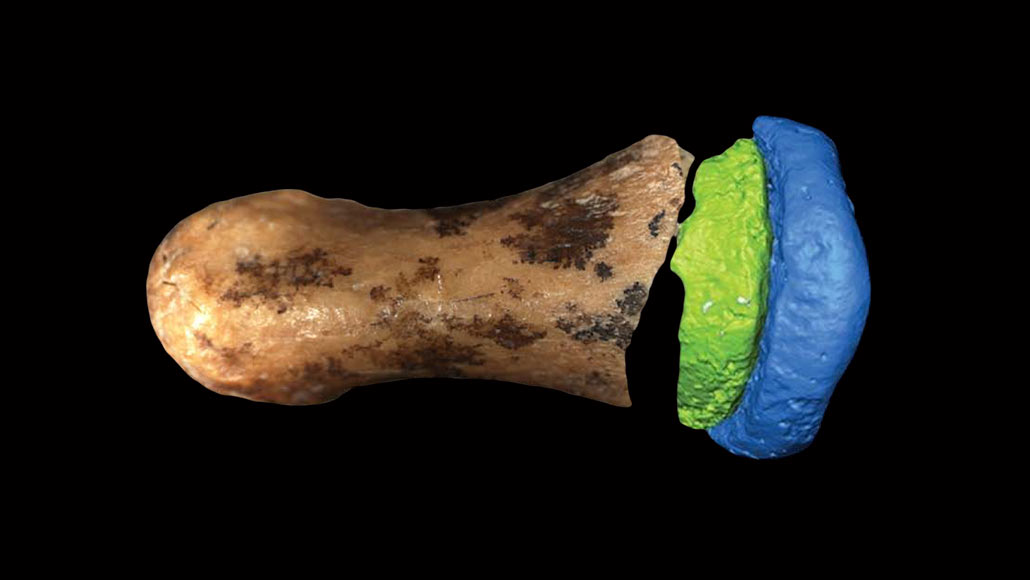This ancient Denisovan finger bone is surprisingly humanlike
Yet the extinct hominids had closer genetic ties to Neandertals than Homo sapiens

A Denisovan finger bone consisting of a newly identified piece, shown, along with colored, digital images of a previously discovered fragment, now broken into two, has surprisingly humanlike dimensions and contours.
E.A. Bennett et al/Science Advances 2019







